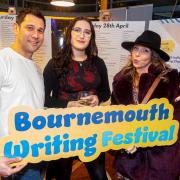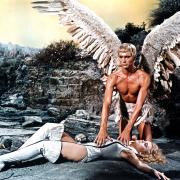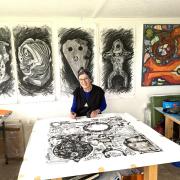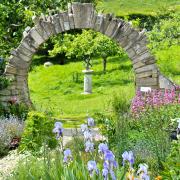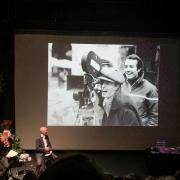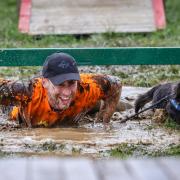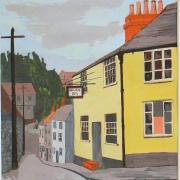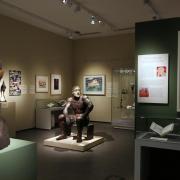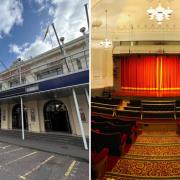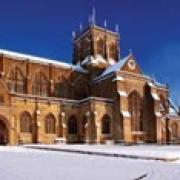Dorset Art Weeks is a phenomenal success story that showcases the county’s vibrant arts scene and gives a boost to its economy. Rosie Staal looks at the original inspiration behind this biennial event

As one of the largest and most successful Open Studio events in the country it is surprising to discover that Dorset Art Weeks, which runs from 25 May - 8 June, started back in 1990 with a letter from the renowned furniture maker and designer John Makepeace.

John, who opened his college of furniture design at Parnham House, Beaminster in the late Seventies, had long been in the habit of welcoming eminent figures such as Peter Hall and Norman Foster to Parnham to address gatherings of friends and students. Seeing guests’ positive reaction to Dorset made him want to spread the word that it was a place worth seeing, with artists worth meeting and patronising.

In his letter, sent to eight influential people in the area, John suggested that an event in which artists opened their studios and showed off their work would not only benefit those taking part but also attract visitors to Dorset. It was a revolutionary idea for that time. John had heard of something similar in Oxford but Dorset, in its size and deeply rural nature, was a very different animal from the city of dreaming spires.
Fortunately one of the eight letters ended up with Carl Earl, the then county librarian and arts officer, who wisely dropped it on the desk of Joanna (Jo) Morland, the recently appointed arts development officer for Dorset. Jo was intrigued and excited by John’s idea. She gauged the level of interest among likely participants by writing to some local artists. Their uniformly enthusiastic response resulted in a rapidly formed organising committee of ten, “all of them really vocal doers,” Jo recalls. The result was that the first Dorset Art Week – in fact nine days, as it included a weekend at either end – was inked into the calendar for May, 1992.
When meeting up with John earlier this year Jo was eager to credit him with providing the impetus in those early days. “The huge respect in which you were held was what drove it,” she tells him, adding, “And the fact that you so wanted it to happen was the strong steer for me, too.”
John is somewhat diffident about the role he played. Explaining that he had not been in a position to join committees in those early years so may not have been at certain crucial meetings. Jo assures him he was. He shrugs, smiling, and defers to her sharper recollections.
With a background in fine arts, and having worked as a potter and sculptor before moving into arts administration, Jo understood the challenges ahead. She also had a direct line to all the local authority-run arts centres and funding bodies and was, at the time of need, a perfect fit for masterminding and delivering the first Dorset Art Weeks.
Other key players in that pioneering event included artist John Skinner, who ran Abbotsbury Studio, and Wayne Bennett, who went on to become director of Dillington House, a conference venue near Taunton.
Everyone brought different strengths to the organising body, and, while there were occasional disagreements – such as whether or not artists should pay to take part and, if so, how much – the commitment created a winning formula.
Jo headed up the first two Art Weeks, in 1992 and 1994. In 1996 she led the DAW committee, and two students from the Arts and Events Management course at the Arts Institute (now Arts University Bournemouth), helped with the administration and leg work. When Jo subsequently left her arts job with the council, another arts administrator and committee member Jackie Donaldson took over as co-ordinator for DAW 1998. Jackie continued to run the event with a voluntary steering committee of fellow artists until 2004.
By this stage Jackie has become DAW’s first part-time paid co-ordinator but recruiting volunteers onto the committee was proving difficult. The turning point came in 2005 when Mike Hoskin, cultural development officer for Dorset County Council, intervened and successfully lobbied the council for their support.
Mike organised a ‘think tank’ of six people from arts backgrounds, including John Makepeace, to decide on the future of DAW. Options varied from giving the whole thing over to a private events management company to putting it in the hands of a charitable arts organisation. The latter option was chosen, and so Dorset Visual Arts (DVA) came into being and took over the running of DAW. This membership organisation has both a charitable and a trading purpose and is managed by a board of trustees. Its aim is to develop and promote opportunities for Dorset artists, designers and makers to showcase and sell their work.
Its first chairman was Simon Pirie, a furniture designer and maker who trained at Hooke Park College, part of John Makepeace’s Parnham Trust. The following year Hugh Woodeson, an artist with experience in charity law and chairmanship, stepped into the role. He was succeeded by Terry O’Rourke, a former town planner and architect and a trustee of other arts and cultural bodies. In 2012 Simon resumed the DVA chair.
Along with scores of volunteers - many of whom have made a huge contribution to DAW over the years - and with hard-working director Jem Main and administrator Suzy Rushbrook, Simon is looking forward to DAW 2014 delivering 16 days of Dorset-inspired creative endeavour and pleasure. This year’s event features over a 1000 artists exhibiting at over 300 free venues. To give you an idea of the economic boost this gives the county, the first DAW attract 21,000 visits to venues, the 2012 event had 112,000 visits.
As usual, Simon will be welcoming visitors to his open studio and workshop at Briantspuddle. “There are two key reasons for my involvement in Dorset Art Weeks,” he says. “One is that it creates a sense of an artistic community throughout the county – and of course there is more fun to be had as part of a group – and the other is that economically it is very important to me as a maker.
“I love Dorset, and I love the way it is represented through artistic creativity. Dorset Art Weeks is the best possible expression of that.”
--------------------------------------------------
Insights On-site IS/OS
One of the innovations for DAW 2014 is a scheme called Insights On-site, or IS/OS, which will broaden and enhance visitors’ experience by informing them about the ideas, processes and contexts of a number of respected artists and makers.
The scheme has been devised by two practising artists, Fran Norton, a DVA board member and lecturer at Arts University Bournemouth, and Jem Main, a former gallery director and, since 2011, the director of DAW.
They will lead pre-booked groups on daily visits to selected studios and workshops and host panel discussions at galleries. Visitors will learn how to look at art and understand the intentions and skills of the artist.
The IS/OS visits will take place during the second week of DAW (31 May to 7 June), between 11am and 12.30pm – and there are 15 places per session. All events will allow time to visit other studios in the locality to make a great DAW day out.
There is no charge, but a minimum £5 per person donation to support the DVA charity is suggested. Many of the IS/OS events and directions are indicated by the icon in the DAW 2014 brochure, to see the confirmed schedule visit dorsetartweeks.co.uk or dorsetvisualarts.org or pick up a brochure at your local Tourist Information Centre or library.
--------------------------------------------------
The DAW Brochure
The now-famous Dorset Art Weeks brochure is a key factor in DAW’s success. In 1992 when there were just 92 venues it started as a simple fold-out leaflet with basic details of artists and a few photographs. This year there are 363 venues featuring over 1000 artists and the brochure has is a comprehensive full-colour 96-page book containing each artists’ biographical details, an image of their work and directions for reaching them plus maps and details of associated events. The shelf life of the brochure now far exceeds the event as many people retain it for years and use it as a directory for finding Dorset artists.
Find it on line at dorsetartweeks.co.uk or locally at libraries, arts centres and Tourist Information Centres.
--------------------------------------------------
A Home & Garden to Inspire
One of the fundraising events in support of Dorset Visual Arts, which organises Dorset Art Weeks, is an Open Day in the spectacular home and garden of international designer and furniture maker John Makepeace and his wife, artist Jenny Makepeace.
Their inspirational house and gardens, Farrs, in Whitcombe Road, Beaminster recently featured on BBC Gardeners’ World, and will be open on Sunday, 1 June, from 11am to 5pm.
Inside the house you can see John’s furniture and contemporary artworks. Outside the gardens, divided into four distinct areas, includes Jenny’s colourful potager with cleft-oak fruit cage, glasshouse and straw bale retreat and John’s grass gardens as well as their impressive sculpture collection.
Details about the Open Day can be found on the DAW website or in the brochure.




